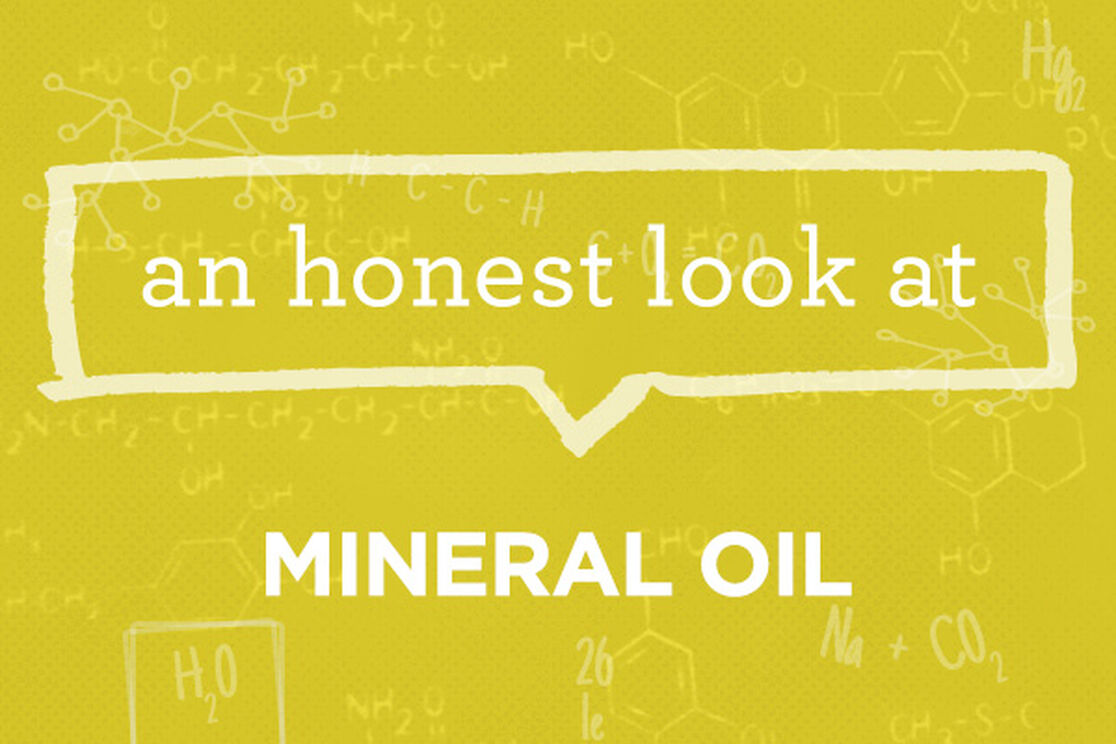Ingredient:
Mineral Oil (aka Liquid Petroleum, Paraffin Oil, Mineral Paraffins, White Mineral Oil)
What it is:
Mineral oil is a colorless and odorless distillate of petroleum that is related but not identical to petroleum jelly.
What it does:
It’s used in a variety of industries, but the most controversial use is in personal care products. In these products, mineral oil acts as a lubricant and moisturizer.
Why we’re featuring it today:
Mineral oil is included in our Honestly Free Guarantee because there is evidence that it is pervasive throughout the human body due to its accumulation in various tissues(2). It has also been found in breast milk, which gives rise to health concerns for babies that are breast fed (3). While it’s been approved as a food additive, it is a potential skin irritant at high doses and many companies have started to phase it out of their topical formulations (4).
We believe it’s better to be safe than sorry – especially when it comes to our babies. Plus, there are many other options with plant-derived ingredients that people have been using for far longer.
How you can avoid it:
It’s easy! Simply avoid products that list mineral oil (or any of the other names it’s known by) in the ingredients label.
References:
- Mineral Oils: Untreated and Mildly Treated. (n.d.). Retrieved November 01, 2016, from https://www.cancer.gov/about-cancer/causes-prevention/risk/substances/mineral-oils
- Concin, N., Hofstetter, G., Plattner, B., Tomovski, C., Fiselier, K., Gerritzen, K., ... & Rieger, K. (2011). Evidence for cosmetics as a source of mineral oil contamination in women. Journal of Women's Health, 20(11), 1713-1719.
- Noti, A., Grob, K., Biedermann, M., Deiss, U., & Brüschweiler, B. J. (2003). Exposure of babies to C 15–C 45 mineral paraffins from human milk and breast salves. Regulatory Toxicology and Pharmacology, 38(3), 317-325.
- Stamatas, G. N. (2015). Mineral Oil in Skin Care: Safety Profile. In Lipids and Skin Health (pp. 291-299). Springer International Publishing.
- Barp, L., Biedermann, M., Grob, K., Blas-Y-Estrada, F., Nygaard, U. C., Alexander, J., & Cravedi, J. P. (2016). Accumulation of mineral oil saturated hydrocarbons (MOSH) in female Fischer 344 rats: Comparison with human data and consequences for risk assessment. Science of The Total Environment.
We aim to provide you with the most honest and credible information possible. This article was reviewed for accuracy by The Honest Team and its internal technical experts.
blog_review_statement



